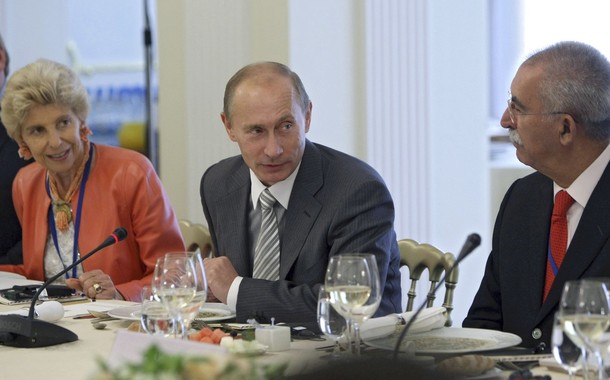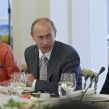
Gazprom Takes its South Stream Bluff to Bucharest
Publication: Eurasia Daily Monitor Volume: 6 Issue: 179
By:

This week in Bucharest, high-level representatives of the Russian energy business and their Italian allies are making their strongest pitch yet for Romania to join their South Stream gas transport project. Romania is the latest target in Moscow’s recent effort to enlist additional countries in South Stream -or to persuade participant countries to commit more actively despite doubts.
Romania is also being exposed to those shifting signals. At the moment, Moscow (with Rome in tow) seeks to convince Bucharest to join South Stream. Only three weeks ago, however, Russian Prime Minister Vladimir Putin announced at the Valdai meeting: "We plan to shift the transit route for future gas supplies from Ukraine to Turkey." According to him, Turkey would become the main transit route for Russian gas to Europe (Moscow Times, September 14). Indeed, Putin made that promise to Turkish Prime Minister Recep Tayyip Erdogan amid great publicity in Ankara in August (EDM, August 10, 11).
Routing South Stream via Romania’s Black Sea exclusive economic zone would be incompatible with Putin’s promise to route it via Turkey’s zone. There are two mutually exclusive route options for the pipeline from Russia to Bulgaria on the seabed of the Black Sea: either running through most of Ukraine’s exclusive economic zone and a small portion of Romania’s zone or, alternatively, crossing from Russia’s zone into the Turkish zone en route to Bulgaria.
Any proposal to use the Romanian zone would make no sense if Russia intends to keep Putin’s promise to Turkey. However, Moscow is trying to play the two against each other. On September 28 in Dzhugba (Russian starting point of the Blue Stream pipeline to Turkey, and putative starting point of South Stream), Gazprom’s Aleksei Miller declared that both Turkey and Romania were keen on being included in South Stream (RIA Novosti, September 28). This proposition is accurate in Turkey’s case, doubtful in Romania’s, and clearly manipulative in any case. Moscow is attempting to unnerve the Turks and pressure the Bulgarians by hinting at a Romania option.
Meanwhile, Russia’s special presidential envoy for economic relations Viktor Chernomyrdin -formerly Gazprom’s CEO and recently ambassador to Ukraine- is casting strong doubts on South Stream’s officially declared rationale: that of bypassing Ukraine’s transit pipeline system. According to Chernomyrdin at the Yalta European Strategy forum, the Ukrainian system "will remain the main transporter of Russian gas to Europe for the foreseeable future," Russia may even increase the gas transit volume through Ukraine (Bohorodchany-Uzhhorod), if Gazprom obtains shared control over the Ukrainian pipelines; and any volumes carried by South Stream would be additional to those via Ukraine, not replacing them, Chernomyrdin said (Interfax-Ukraine, September 25).
Chernomyrdin’s is only the latest suggestion that Moscow could well renounce the idea of bypassing Ukraine through South Stream, if Gazprom achieves some form of shared control over the Ukrainian transit system. To that end, Moscow is currently trying to enlist several European companies in a Gazprom-led consortium, hoping that Ukraine’s January 2010 presidential election might bring a more Russia-friendly government in power. South Stream would become superfluous if Russia achieves shared control of the Ukrainian transit system. Gazprom would hardly shift any significant gas volumes from the Ukrainian system into South Stream in that case.
Italy’s state-controlled ENI conglomerate (working closely with Prime Minister Silvio Berlusconi) is Gazprom’s ally in the South Stream project. As Francesco Sisci has summed up the situation, ENI views this project as an opportunity to corner a large chunk of the European market together with the Gazprom monopoly, contradicting the E.U.’s energy security policies and discouraging investment in Nabuccco by keeping the South Stream option however dubiously afloat (La Stampa, September 24).
Russia’s main motivations in promoting South Stream are mainly political. First, to discourage investment in the E.U.-backed Nabucco project by making it looks as if struggling against a powerful Russian rival. Second, it threatens Ukraine with a massive shift in the gas transit volume, away from Ukraine’s overland pipelines into the proposed South Stream. And third, in a medium-term perspective, to create a transportation option for non-Russian gas from Central Asia and the Middle East, if Moscow succeeds in assembling a gas producers’ cartel under Russian leadership. That will become unlikely, however, if the E.U. successfully advances its Southern Corridor strategy, of which Nabucco is the first major component.




